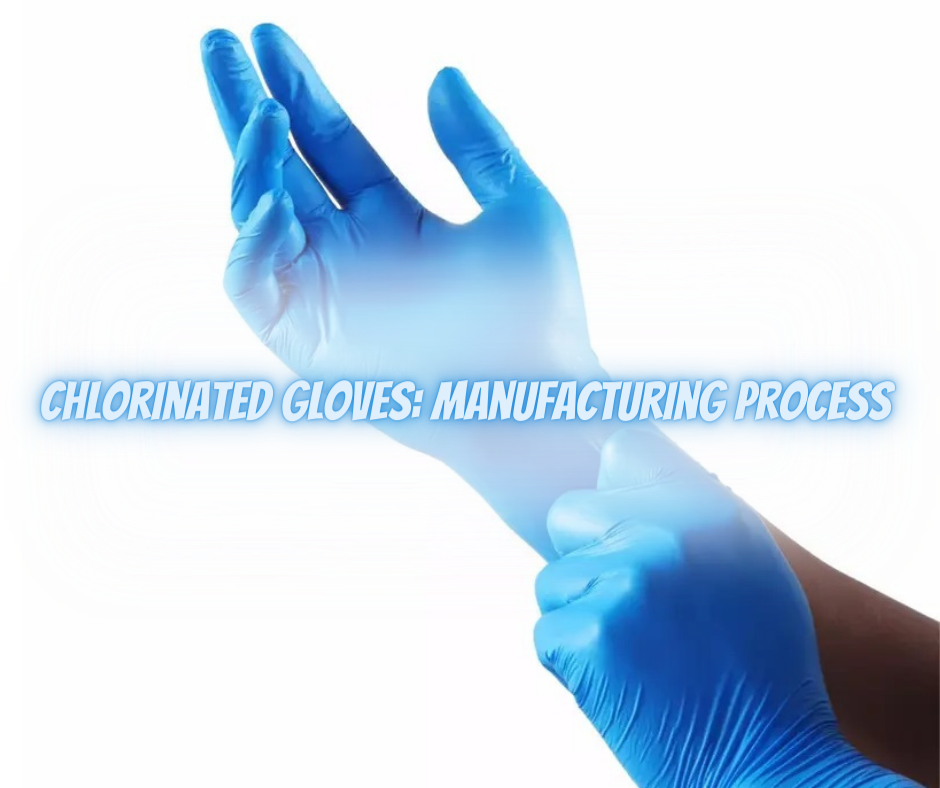Chlorinated Gloves: Understanding the Processing Behind These Essential Tools
Introduction:
Chlorinated gloves play a crucial role in various industries, providing protection and preventing the spread of harmful substances. But have you ever wondered how these gloves are processed? In this article, we will delve into the manufacturing process of chlorinated gloves, exploring the steps involved and shedding light on the benefits of chlorination. By understanding the processing behind these essential tools, we can appreciate the meticulous efforts that go into ensuring their quality and effectiveness.
I. The Manufacturing Process of Chlorinated Gloves
A. Raw Material Selection The production of chlorinated gloves begins with the careful selection of raw materials. High-quality natural latex or synthetic materials, such as nitrile or neoprene, are chosen based on their suitability for various applications and desired glove properties. The raw materials are subjected to strict quality control measures to ensure consistency and safety.
B. Mixing and Compounding The selected raw materials are then mixed and compounded to create a homogenous material for glove production. Various additives, such as accelerators, antioxidants, and pigments, may be incorporated during this stage to enhance glove performance and appearance. The compounding process is carried out in specialized equipment under controlled conditions to achieve optimal material consistency.
C. Glove Forming After compounding, the glove material is ready for the forming process. There are different techniques used for glove forming, including dipping and molding. In the dipping method, formers or molds are immersed into the compounded material, allowing a thin layer to adhere to the former’s surface. The former is then slowly withdrawn, and the wet glove undergoes several drying stages to remove excess moisture. Alternatively, in the molding process, the compounded material is directly injected into glove molds, where it solidifies into the desired shape.
D. Chlorination Process Once the gloves are formed, they undergo a chlorination process to improve their properties. Chlorination involves treating the glove surface with chlorine gas or a chlorine solution. This process modifies the glove’s surface properties, resulting in a smoother and more comfortable texture. Chlorination also reduces the tackiness of the glove, making it easier to don and doff, and minimizes the risk of latex allergies by removing residual proteins.
II. Benefits of Chlorinated Gloves
A. Improved Comfort and Ease of Use Chlorination significantly improves the comfort and ease of use of gloves. The process reduces surface friction, making the gloves smoother and reducing the likelihood of sticking to the skin. This smoother surface also allows for easier donning and doffing, enhancing user convenience and efficiency.
B. Reduced Risk of Allergies By removing proteins present in natural latex, chlorination minimizes the risk of latex allergies. Latex proteins are known allergens that can cause adverse reactions in sensitive individuals. The chlorination process helps make chlorinated gloves a safer option for both users and patients, especially in healthcare and laboratory settings where latex allergies are of particular concern.
C. Enhanced Chemical Resistance Chlorinated gloves exhibit improved chemical resistance compared to non-chlorinated gloves. The chlorination process alters the glove surface, creating a barrier that enhances protection against a wide range of chemicals. This makes chlorinated gloves suitable for applications where contact with hazardous substances is likely, such as in industrial, automotive, and cleaning industries.
D. Smudge and Stain Reduction Another advantage of chlorinated gloves is their resistance to smudging and staining. The chlorination process reduces the glove’s surface tackiness, making it less prone to picking up dirt, oils, or other substances. This property helps maintain a clean and professional appearance during glove use, particularly in industries where hygiene and cleanliness are paramount.
In conclusion, understanding the processing behind chlorinated gloves provides valuable insights into the meticulous steps taken to produce these essential tools. From the selection of high-quality raw materials to the precise mixing and compounding, followed by glove forming and the chlorination process, every stage contributes to the final product’s quality and functionality.
Chlorinated gloves offer numerous benefits, including improved comfort and ease of use, reduced risk of allergies, enhanced chemical resistance, and resistance to smudging and staining. These advantages make them a preferred choice in industries where protection, dexterity, and cleanliness are critical.
As we appreciate the significance of chlorinated gloves in safeguarding workers and preventing the spread of harmful substances, it’s essential to recognize the expertise and attention to detail required in their production. By ensuring proper processing and adhering to stringent quality control measures, manufacturers can provide gloves that meet the diverse needs of industries worldwide.
Next time you don a pair of chlorinated gloves, you can now have a deeper appreciation for the intricate processes involved in their creation. Whether in healthcare, manufacturing, or any industry where protection is vital, chlorinated gloves continue to play a crucial role, allowing workers to perform their tasks safely and efficiently.

